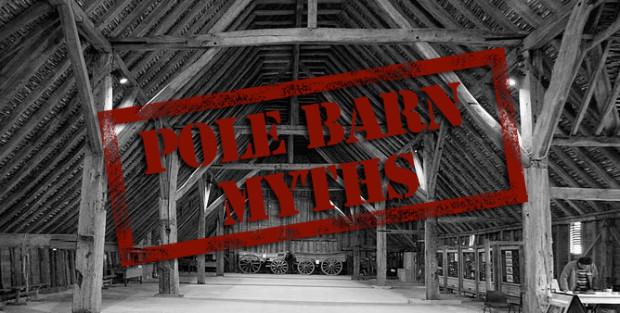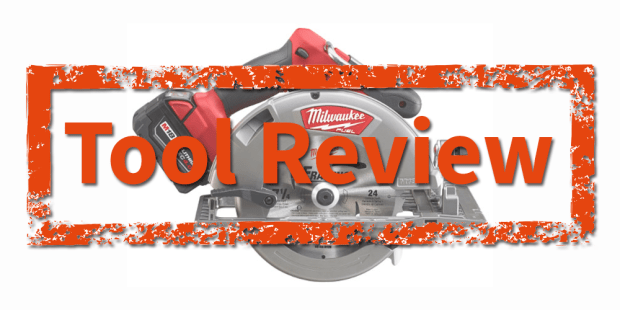Debunking Three Myths – The Whole Darn Pole Barn Truth

Since the days that mankind left the caves and started building stand-alone structures, we’ve always been dancing that delicate dance between cost and function. In the beginning, resources were scarce, so the cost of a building meant a reduction in firewood, or time, or land. Today, the resource we’re probably most concerned about (other than time) is money.
Before you become convinced that a pole barn is all you’re going to need when it comes to your workshop, garage, housing for your livestock or animals, or even storage, you should consider the whole darn, pole barn truth about some common misconceptions regarding these kinds of structures.
MYTH #1 – Cheaper is always better.
There are times when being thrifty is your best option. If you’re buying a television set and find the exact same model television at another store for less, you should definitely go with the less expensive option. This is not the case when it comes to construction. It’s impossible to use price as your primary determining reason when choosing one kind of structure over another. There are just too many variables and in construction, you get what you pay for – which means that cheaper usually means lower quality or more follow-up maintenance.
Comparing pole barns to metal buildings is like comparing apples to oranges. In construction, cheaper is not always better. In fact, cheaper is usually more expensive in the long run. While a pole barn will require less initial investment, this kind of building requires maintenance. The primary material that a pole barn is constructed of – wood – is naturally inclined to decay. This means that over time, you will be spending valuable time and money on keeping your building standing.
Steel buildings will require a slightly greater initial investment. A really well made steel building might require an even greater initial investment. The pay-off on this is pretty easy to notice fairly early on when you find that your steel building stands up to the debilitating effects of weather, insects, and even the march of time.
A well-constructed steel building has galvanized parts, easy-to-assemble, pre-cut and pre-drilled parts which have been engineered to fit together, requiring no on-site adjustments. Paint can come with a 40 year warranty and isn’t prone to fading or changing shades because of the sunshine or the rain.
Side panels, roof panels, and even support beams don’t require replacement on a steel building because they are constructed to last. The whole darn, pole barn truth is, while your initial out-of-pocket investment may be smaller on a pole barn, over time a pole barn is going to cost you a small fortune. You bought your building for a lifetime, not a quick fix – and over a lifetime, there is no comparison.
MYTH #2 – A pole barn has all the space I am ever going to need.
Everyone knows that when you’ve got the space, you use the space. Even if you build your pole barn on a small plot of land and it takes up a relatively small area, you may have at least one pole in the middle – and more as the interior span increases.
For smaller spans, less than 40 feet, pole barns will not typically require an interior support column. Regardless of the span, however, pole barns require a truss with a flat cord along the bottom of the ceiling supports. This is because wooden support beams do not transfer roof and wall loads in the same fashion as a steel haunch connection. A Steel building does not require a truss and cord type system and boast a very liberal and space conscious “A” Frame type rafter. 
Once a pole barn’s span becomes larger than 40’ or so truss size increases and consequently, so do materials. This increases cost. One way around this is to add interior columns, which is why columns are so prevalent on large span pole barns.
When spans begin to exceed 40′, steel buildings become extremely cost effective in comparison to wooden pole barns. Based on price per square foot, steel buildings – especially those with large spans – are almost always less expensive than any other clear span construction method.
Steel buildings have nearly limitless interior spans. This is not a bold exaggeration, it’s true. The way steel buildings are engineered to transfer loads (weight and pressure) to the sides and down to the ground means that the roofs are supported by the walls, not intrusive beams which run through the interior.
Imagine your workshop or small business expansion – even your livestock barn or storage – with absolutely no interior interruptions. The entire square footage is yours to do with as you please. This is the beauty of a steel building. It’s the reason airport hangars and factories are made from steel – there is no substitute for the freedom of the interior space you can only get from a steel building.
The whole darn pole barn, truth is that wood can’t support its weight the way steel can, and it can’t be engineered nearly as efficiently. Steel trusses are shaped, engineered, and manipulated into efficiencies that wood can’t be.
Frankly, wood should be used for furniture not construction. It’s perfect for a nice desk, less perfect for a workshop.
MYTH #3 – Any property development is good for my property value – even a pole barn.
Open space is all the rage – and, sure, municipalities, counties, and states are adopting areas where building is prohibited to protect natural landscapes. This is a good thing.
But when you’re ready to sell a piece of land, it’s pretty much a real estate certainty that land that has a structure on it is going to be worth more than land without, right? Not always. There are anomalies in real estate that I find interesting. Did you know that homes with a swimming pool are, many times, worth less than homes without? Some buyers don’t want the added work and cost required to maintain an in ground pool.
The same thing goes with structures. While a brand new pole barn is going to look really nice on anyone’s property, over time, the headache of maintaining this building so it doesn’t quickly become a neighborhood eye-sore becomes a problem. An old or shabby wooden building that hasn’t been maintained consistently will actually make your property worth less than having no building at all.
Another thing to consider is in most cases, banks, lenders, and appraisers don’t consider a pole barn a ‘permanent structure’ because of the lack of a foundation and the fact that the walls don’t need to be secured to the ground with concrete or other permanent methods. Additionally, pole barns aren’t typically ‘engineered’ to meet structural requirements, they are much like an agricultural loafing shed or just a plain large shed. Pre-engineered metal buildings require proper foundations, which means these buildings are permanent structures. Of course a pole barn may provide curb appeal – if a bank won’t lend on it – no one is going to pay extra for it.
A steel building is engineered to keep its shape and aesthetic value for decades. This means that the structure you find valuable and decide to build today is going to look remarkably similar and have as much or more value to someone else in several decades – with little or no work from you.
The whole darn, pole barn truth is, construction is an investment, and when you make an investment, you want it to appreciate in value. That’s why you invest – money+time SHOULD equal more money. This may not be the case when you plop a wooden pole barn on your property and don’t spend plenty of time keeping it in tip-top shape.
Before you decide that a pole barn is exactly what you were looking for, you should really do some investigation into the benefits of steel buildings.
Don’t stop there, because not all steel buildings are the same, either. There are some things you should know about your steel building company as well.
In the end, remember, an apple and an orange are not the same and you shouldn’t compare the two. Chances are you want to invest in a permanent structure that’s going to last a lifetime – and really the best option is a steel building. This investment requires thought and research – and you really need to do some homework – because making the wrong decision can be costly for years. And that, for sure, is the whole darn truth.
Photo courtesy: Brian Snelson« How do Building Codes and Permits Work?
Put Your Business Expansion Plans on Autopilot »
Popular Posts

With 2014 building starts on the rebound perhaps the most important question for contractors is not, “where is the business,” but, “where is the cash?” According to Richard Gavin, CPA at Grassi & Co. and a leading construction industry analyst, “most contractors who are going out of business this year are failing because they are running out… …

If you haven’t tested the Milwaukee 2731 M18 Fuel Brushless Circular Saw you’re missing out. The 6-½” version of the M18 Fuel Circular Saw has become a staple in contractor’s toolboxes as well as homeowner’s steel workshops due to it’s stunning cordless power. The latest version, released in August, has added to a growing excitement surrounding… …

